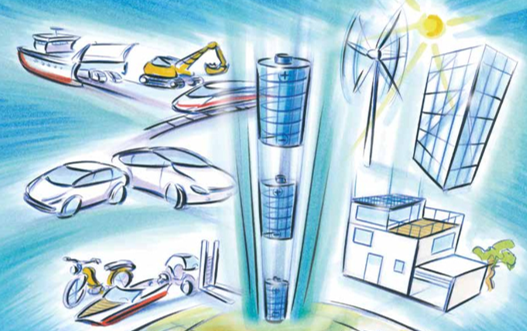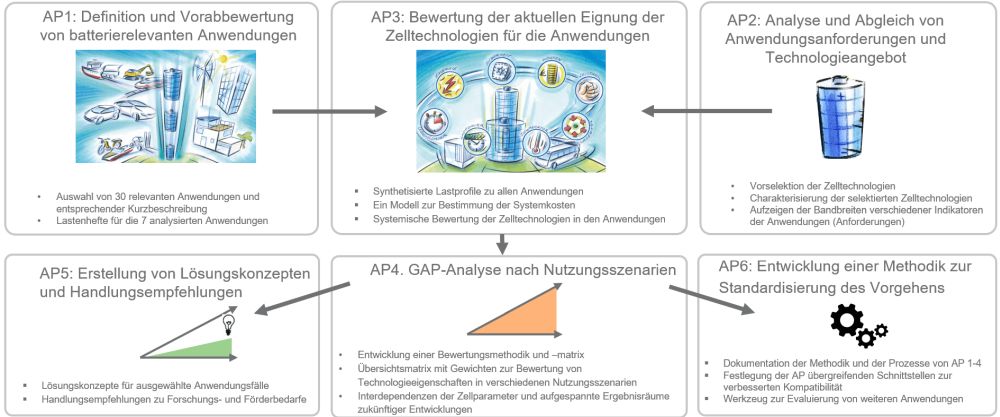| Duration: | 03/2021 - 02/2024 |
| Contracting Authority/ Sponsors: | Bundesministerium für Bildung und Forschung (BMBF) |
| Project Partners: | Fraunhofer-Institut für System- und Innovationsforschung ISI RWTH - Institut für Stromrichtertechnik u. Elektrische Antriebe TUM - Lehrstuhl für Fahrzeugtechnik Fraunhofer-Institut für Siliziumtechnologie ISIT |
| Project Focus |
BetterBat – Assessment of the Technical and Systemic Fit of Battery Technologies for Battery-relevant Applications
The "BetterBat" project addresses the interface between battery technology and its potential use in an application. "BetterBat" thus explicitly focuses on the user side and its systemic application-specific requirements, enabling target-oriented research and development, shortening the time-to-market accordingly and reducing the risk of failing to meet market requirements. "BetterBat" is intended to provide answers to the following questions, for example: For which applications can battery-electric solutions be considered today or in the future? Which battery technology is suitable for which application? What are the strengths and weaknesses and where might further research or funding be required? The work packages required to answer these questions are shown schematically in the figure below.
Within the scope of the project, ten relevant fields of application for the establishment of battery solutions will be analyzed and evaluated. In a first step, promising applications will be selected and detailed requirement profiles identified. For these applications, the potential range of current and future cell and system technologies will then be determined, and the suitability of the selected cells and systems for the various applications will be quantified and the associated systemic conditions analyzed. In a downstream GAP analysis, both perspectives are combined to obtain information on the suitability of battery solutions for the applications under consideration. Both the current status quo and future developments (development potentials) are covered under the boundary condition of possible market dependencies. For cases with a high potential, concrete options for action and solution approaches are then developed to increase the fit. To ensure that further applications can be analyzed and evaluated with the help of the developed procedure even after the end of the project, the procedure for selecting and analyzing promising applications is finally standardized.

